Every December we go back to Mexico for the Holidays and spend time with our families. And every December, invariably, my 91-year-old grandmother asks me to write her a letter “every now and then”. I always say yes but, eight years later, I have only sent her one. As another family gathering nears, and another year passes where I don’t write a letter, I wonder if I’m the worst grandson ever. I find some superficial comfort knowing that it’s nothing against my grandma, as I don’t write letters. Period.
I can’t remember the last letter I wrote. I remember writing Bryony love letters in our early years of dutiful courtship, and I recall sending my parents two postcards, one from summer camp and one from a summer trip to Israel, but little else. I have horrible handwriting, my hand usually aches after writing more than a paragraph, and I always think of a better way to say something after I have already written it down, leaving my handwritten notes full of crossed out ink blots and unreadable scratches that look like words. So, I don’t write letters. But, man, I can write e-mails! All day long until my fingers go numb. I’m a great e-mailer, actually. I can pitch my work explain myself much better through e-mail than in person. Not that my grandma cares. She just wants a letter, in my handwriting, in some nice paper and in a nice envelope to arrive in her mailbox unexpectedly. And, to be honest, I think I would want that too from time to time. So does British designer Craig Oldham who has been conducting an ongoing task called the hand.written.letter.project.
He has been inviting designers around the world to “tackle the issue of personality in a world of depersonalisation, and to reflect on the state of transition from physical to digital, by recording their visual reaction[…]” in a handwritten letter addressed back to Craig. More than forty designers have graciously played along, and have penned letters, in their stationery to varying results. Some admit not knowing what to write, while others have taken it as an exercise in wit, and some have taken the opportunity to, indeed, reconsider the romance of writing a letter. That this exercise is done with designers adds a separate layer of memorability as the letterheads themselves are laden with personality and are reflective of their senders — take Daniel Eatock’s for example. While some folks confused this exercise as a showcase for their letterhead, the results are optimistic in highlighting the camaraderie that designers have amongst themselves, but that optimism fades on the potential of handwritten letters making a comeback in our profession. Craig has taken some time to answer a few questions about this project and the repercussions that the disappearance of handwritten correspondence might have. And, while you read, I’m going to write that letter I promised a few years ago.

Click on images for larger view in pop-up window.
From Brahm.

From Milton Glaser.

From Tom Geismar and Ivan Chermayeff.

From Michael Johnson.

Armin Vit: What prompted you to start this project? Was it a specific instance, or a larger set of worries coming together?
Craig Oldham: Well, both really. The build up has been probably since I furthered my interest in design. There have been long, raging debates on the future of this, the death of that: the “What will happen to the old now we have the new?’ questions on varying mediums and messages. The fact is that fresh and new technologies bring reassessment of what people love about how they communicated before—in the instance of letters—the aesthetics, paper, tactility, personality, permanence and collectibility. But, if I were to pick from the bunch I would say the feeling that no one wants to be personal anymore. I’ve always loved personalities. From personality you get humor, imagination, creativity, emotion and interest—all of which are absent from the digital experience— at least for me. An accumulation of all that and one bill and a takeaway menu too many finally pushed me over the edge.
AV: Apart from e-mail, what do you think are the biggest reasons people don’t write letters anymore? Is it simply an antiquated notion?
CO: Time is the biggest reason for me. I think that our pace of life and expectations of our society have created a 24-hour living culture. We want everything and we want it now. The fast paced introduction of all things digital has overwhelmed the letter so now we can say what we want with a click, click and double-click. But, does that means it’s better or worse? I don’t pretend to have an answer to that one.
AV: You are a graphic designer, so naturally you asked graphic designers to contribute. Would this be any different had you decided to ask lawyers, doctors or plumbers?
CO: Obvious things out of the way first; the execution and visual presence of the collection as a whole would not be as impactful and I’d have a guess that the stationery would be a little different, to put it nicely. However, regardless of the aesthetics, I believe the content would be just as engaging and as thoughtful as the current project. The thing about a letter is everyone has experienced them and so, I believe that everyone will have something to say: just read the one my mum sent me, a nurse in a small town Hospital, her words may answer that question better than mine.

From This is Real Art.

AV: Who’s letter was the most surprising?
CO: The ones that really surprised me were those from people who had found the project and felt compelled to write to me (Sam Mallett, Penny Range, Tom Crashaw), they were a great surprise. But all of them, really, the fact that I got responses amazed me. I found those that expressed their content and thoughts visually—Paul Belford’s from This Is Real Art is a great example [shown directly above]— extremely interesting as they brought a whole new dimension to the meaning of the letter: the medium is the message perhaps. I was also surprised by the responses that got really under the skin of the issue such as Tim Beard (Bibliothéque), Geoff Nicol (Navyblue) and Wally Olins.
AV: Do you think you will ever receive a handwritten letter from any of the participants again?
CO: Maybe if I ask nicely. In an ideal world I would love to receive a letter from anyone involved in the project again, and this will hopefully be sooner rather than later as I’m having a think about moving the project into another stage. But, I’d love another letter from Stefan Sagmeister: it’s funny, he commented about handwriting being a pain in the ass to read, and to this day I still don’t know what his last paragraph says.

From Stefan Sagmeister.

AV: It’s easy to argue that handwriting is an extension of one’s personality, so a handwritten letter is, in principle, more personal than an e-mail, but isn’t the voice as important? Does handwriting just become decoration to what one wants to say? I know, it starts to get philosophical, doesn’t it?
CO: Admittedly, the voice is as important. When it comes to the voice, content is king: the execution is there to support the communication, not hinder it. However, before setting out to say anything it’s most important to know exactly what you want to say, and how to say it to the best effect, so why not choose a medium based on your content? When you boil it down to its essence the question is about communicating. Years passed that we wrote on walls until paper came around, then we found other ways of communicating, Mr. Digital popped up his head and suddenly we should forget how to pen a letter? Banksy surely hasn’t changed his method of communication now he has a book or two and a website.
Letters are not a dying or dead medium they are simply different: an alternative. In terms of communication, there is no right or wrong way, there is only popular. Digital is not the right way and Analogue the wrong, Digital is simply more popular at this time. We don’t all have to communicate digitally just because we can and I just wanted people to think about writing in the physical. If we forget or ignore a discipline then a skill set is lost, for me this is not what advances and improves a culture. Speaking in basic terms, culture to me means a variety of different ways of doing the same thing. Better stop now, as you say it does indeed start to get a little philosophical.
AV: Who was the last person you wrote to? Did he or she write back?
CO: One Mr. David Carson. He hasn’t written back yet, but ironically he did e-mail. That’s what I’m up against.
AV: Thanks for your time Craig. Write soon, will ya?

From Craig’s Mum.






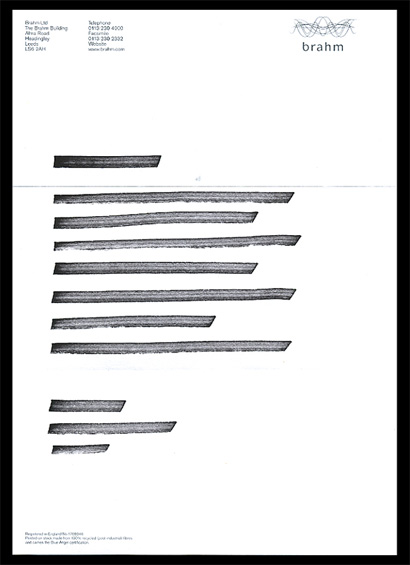
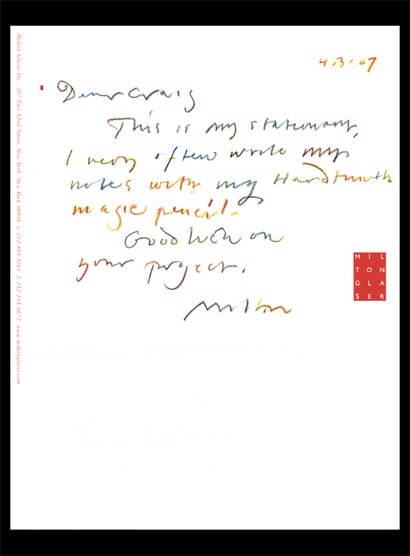
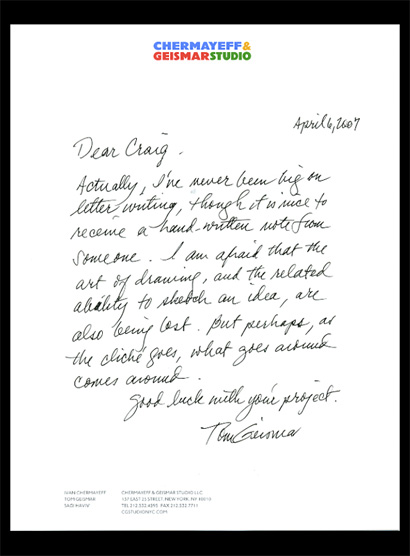
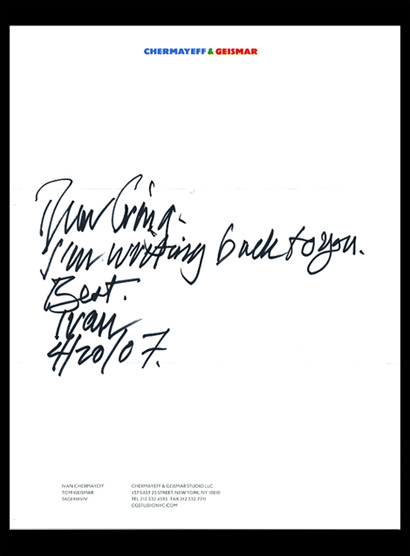
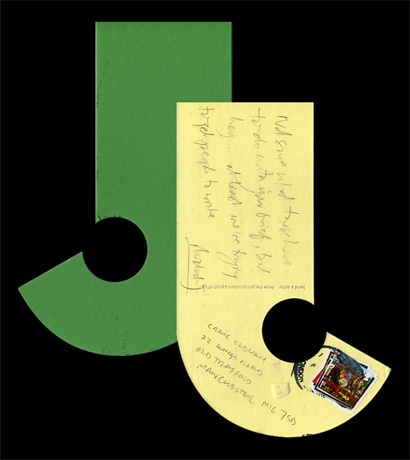
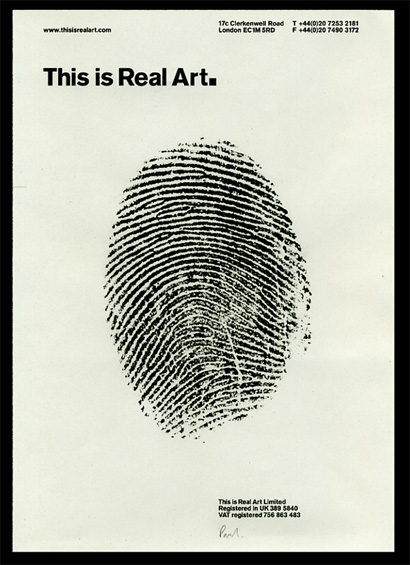
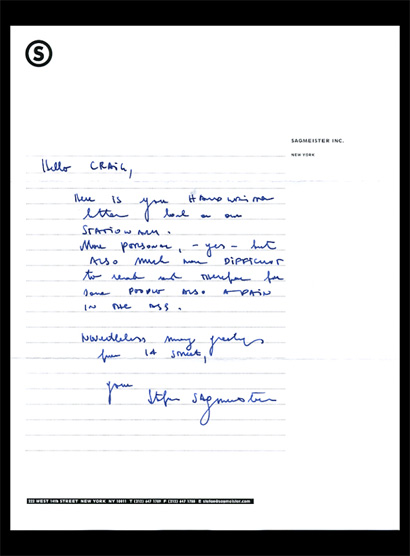
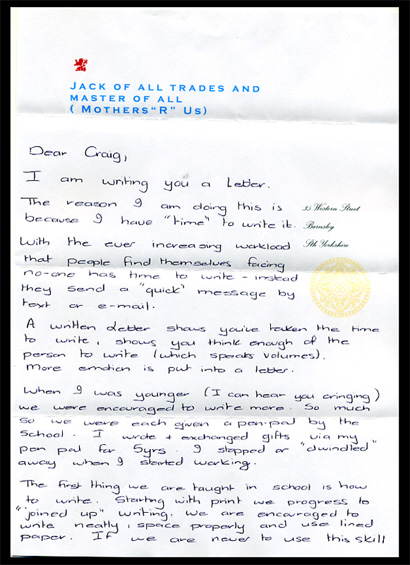
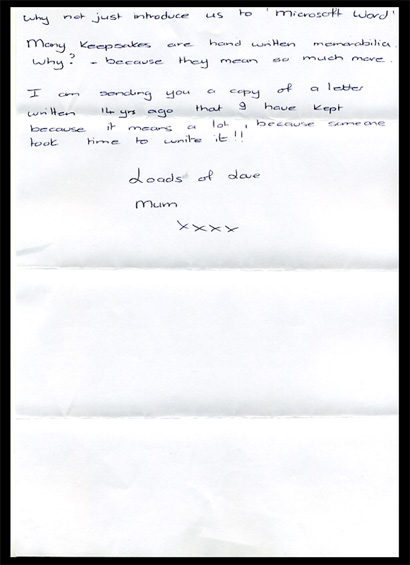
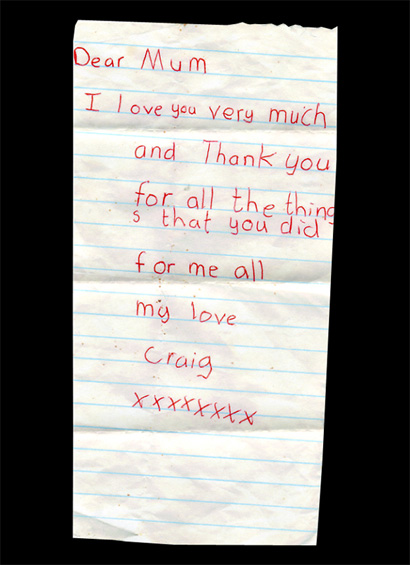
When my husband I began first dating, I wrote him a letter on a napkin telling him how I felt about him and that being married might not be that bad. That was six years ago and we were married three months ago.
I think a handwritten note has a deeper impact than an email. This is the same reason they tell those who had just had an interview to send a handwritten thank you to the interviewer. It meant you took the time to think about the message you were sending and in addition took the time to write it down, put it in an envelope, put a stamp on it, run down to the post office or to your mailbox and send it off.
I love handwriting and receiving messages that way, always will.
On Dec.12.2007 at 10:39 AM